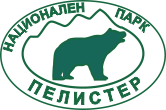About NPP
History is a part of who we were, who we are, and who we will be. As you explore these pages, we hope you find what you are looking for – but even more importantly, we hope you discover something that surprises you. We invite you to learn more about history and how the National Park Service works to preserve it.
Pelister National Park was proclaimed on November 30, 1948 by a law endorsed by the Presidium of the People’s Republic of Macedonia. According to the Law on Nature Protection the public institution Pelister National Park is responsible for the protection and management of the Park.


Mountain Baba, more commonly known as Pelister is the southern most mountsin with alpine characteristics. Set between the valleys of Pelagonija and Prespa, its over 465 milion years old and the highest peak in the park is 2,601 meters above sea level.
There are two legends linked to the name Pelister. When viewed from a far, the grey – white stones on the mountain sides resemble a dove. One legend says that the name Pelister comes from the Greek word dor dove – perister. Accoriding to the other legend the name has its origins from the characteristic five – needle pine in the park.


The Molika pine – Pinus peuce is the best known feature of National Park Pelister. This species was discovered by the Austrian botanist August Grisebach in 1839. Although the Molika is also found in other mountains of the Balkans, one of the oldest and mosto compact forest communities can be found on Pelister. By walking on Pelister it is possible to find trees over 230 years old.


In the spring and summer, the meadows are coloured with many flowers, bathing in the heavenly sun. To view the daily butterflies Scythris crupta nad Scythris similis, wich only live in Pelister, is magical. You can also view the night butterfly Hadena clara macedonica that ist found only in Macedonia.
If you are archeology lover, find some time to visit settlements form the Iron Age the medieval period that are near the park. Following the ancient path Via Egnatia wich passes through the Park you will have a unique opportunity to walk the same road that the Apostle Paul, the Macedonian Phalanx, the Romean Legions and the Byzantine Tsars traveled.
Prevalence
Pelister National Park is located in the south-western part of the Republic of Macedonia, encompassing an area of 17.150 ha on the northern side of the Baba massif at altitudes between 900 and 2601m. The regional road Bitola-Resen and the Bigla Mountain are to the north of the Park and the border with Greece is to the south. To the east of the Park are the Pelagonide valley and the city of Bitola and to the west are the Prespa valley and the city of Resen.

Pelister National Park is spread on Baba Planina and stretches between the Prespa Valley to the west and the Pelagonija Valley to the east. To the north it is bordered by the Little Capari Valley and the Gjavato mountain pass (1169 m.), which separates it from Mountain Bigla, and to the south via the Bigla mountain pass (1505 m.), which is adjacent to the Varnos Mountain (2125 m) in Greece, from which, it is divided by state border line.
Baba Planina and NP Pelister have a mostly meridian direction of extension of 25 km, and is characterized by a symmetrical appearance, because the mountain range is equally distant from the Pelagonija and Prespa Valley. Since the main one was on the mountain, several side beams are separated, on which there are 35 peaks higher than 2000 m. Apart from the highest peak, Pelister (2601 m.), The most prominent peaks are: Steve (2468 m), Veternica (2420 m), Muza (2351 m), Bojadziev Vrv (2331 m), Visoka Chuka (2182 m), Vrteska (2010). m) etc.


Pelister National Park covers 38% of the surface of Baba Mountain. Geographically, the territory of the Park extends between 41 ° 415.96 “and 40 ° 52’27.85” north latitude and 21 ° 315.29 “and 21 ° 169.41” east longitude. A detailed description of the border of NP “Pelister” is given in the Law on Proclaiming the National Park Pelister, from 2007 (Official Gazette of RM no. 150/2007).
The total length of the park’s border is about 86.99 km. The distance from the easternmost to the westernmost point is 20.37 km, and from the northernmost to the southernmost point 23.48 km. Within these borders, the area of Pelister National Park has 17,170 ha., and in relation to the area determined in the Law for Proclamation of Pelister for National Park, there is a difference of 20 ha., (17.150 ha.), which is allowed deviation of 5%, which in the future re-proclamation, should be strictly specified.
Location of the Pelister National Park


Administratively, the area of the National Park “Pelister” belongs to the municipalities of Bitola and Resen. A larger area of the Park belongs to the municipality of Bitola, ie 12561.32 ha (73%) of the area, while the remaining part of 4587.68 ha (27%) territorially belongs of the municipality of Resen. Within the park there is only one settlement – the village Malovishte. Several larger settlements are located in the contact zone of the Park, in the immediate vicinity (at a distance of less than 1 km): Kazani, Rotino, Capari, Magarevo and Trnovo in the north, respectively Dihovo and Nizepope on the east backpack and a few kilometers away, but still in the immediate area, there are villages: Kozjak Arvati and Brajcino, on the western border of the Park.




